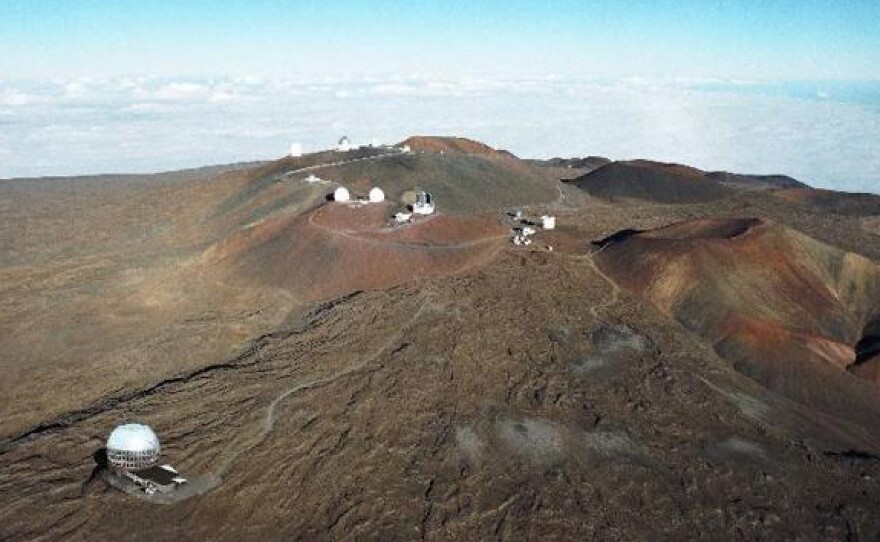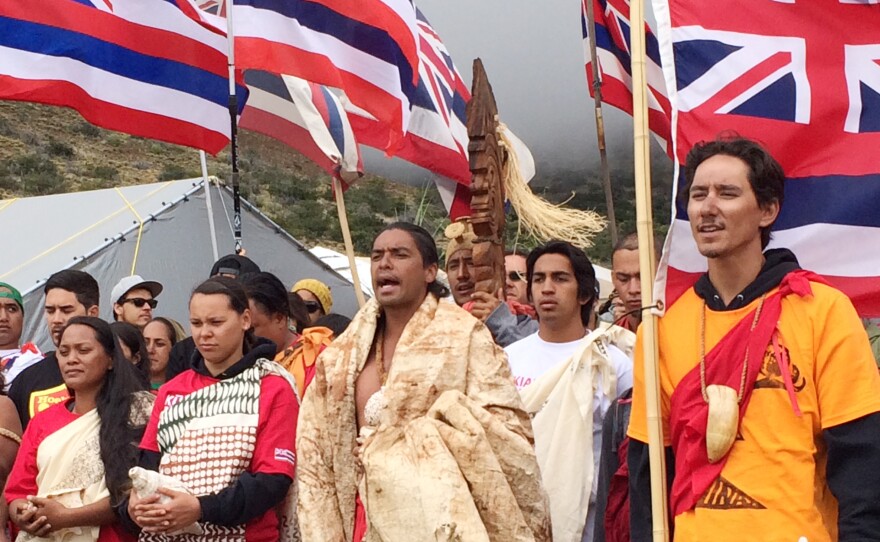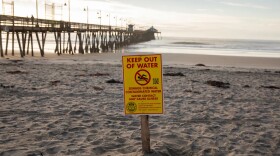

In Hawaii, a battle is going on over the future of a mountaintop. Native Hawaiians say it's sacred ground, while astronomers say it's the best place in the world to build a massive, 18-story telescope.
This is not simply a story of religion versus science. Activists consider the construction of a giant telescope on the island of Hawaii to be a desecration of their sacred land.
On an overcast morning, barefoot men and women dance hula 9,200 feet above sea level, to a song honoring Mauna Kea, the mountain under their feet. Their hips sway to the beat of a drum as they call out in chant to Poliahu, one of the many Hawaiian gods that reside in the mountain. Hundreds of protesters who have camped out on Mauna Kea for weeks watch the hula in silence. A gust of wind ruffles an upside down Hawaiian flag, a sign used to show the state is in distress.
"We've been advocating for no more development on Mauna Kea for years. And our words have fallen on deaf ears," says Vicky Holt Takamine, a kumu hula, or hula teacher, who led the dancers.
The $1.4 billion project would be the 14th and largest observatory on Mauna Kea. Scientists say the telescope would allow astronomers to see 13 billion light-years away, going all the way back to the origins of the universe. It could lead to greater knowledge of star formation, dark energy, and other fundamental questions of existence.
"I think there's a perception that there's a sort of a disconnect from the observatories to the community," says Doug Simons, the executive director at Canada-France-Hawaii Telescope.
Astronomy in the islands dates back to 1968, when the first telescopes were built along the slope of the mountain's summit, he says.
The seven-year process of approving the newest telescope included public hearings and legal challenges, with two appeals still pending in lower courts. Simons says in all his time working on the Big Island, he's never seen this level of opposition.
"Completely unprecedented in the history of Hawaii astronomy — no comparison," he says. "And you have to ask yourself, what's the difference? A lot of people are asking that, 'What changed since the last time a big telescope was put up there that has allowed this wedge to be driven in the community?' "
The protests, which have attracted international attention, arose from the indigenous rights movement. For many activists on the mountain, Mauna Kea has come to symbolize a fight for native knowledge, land use and Hawaiian sovereignty. Earlier this month, 31 people were arrested for blocking the road to prevent construction crews from reaching the summit.
One of them was 26-year-old Kaho'okahi Kanuha, a preschool teacher at a Hawaiian charter school. He says the battle over five acres atop Mauna Kea is about more than just land. It's about a clash of beliefs.
"Curiosity should not supersede the values and the traditions of the host people and the host culture," he says.
Kanuha says he's not against the science. He points to his Polynesian ancestors, celestial navigators who charted their course to Hawaii by following the stars.
"It's the basis of us, the foundation of our kūpuna [elders], being able to find new land and create new life," Kamua says. "However we did not desecrate and destroy things to do that."
And Kanuha says that's the biggest philosophical difference between the protesters on the mountain and supporters of the telescope.
Copyright 2015 Hawaii Public Radio. To see more, visit http://www.hawaiipublicradio.org/.






